14 FAQ’s about essential oils
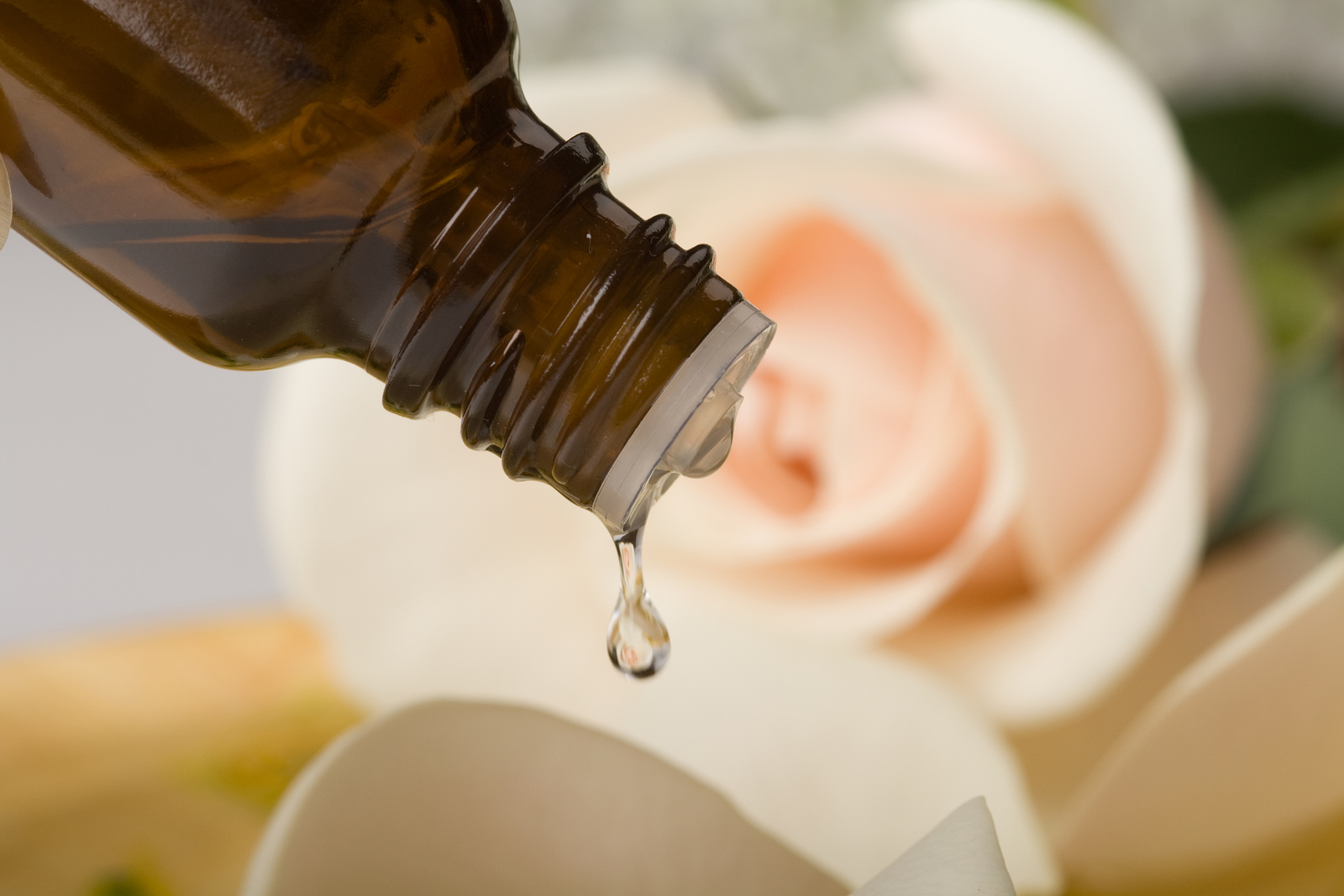

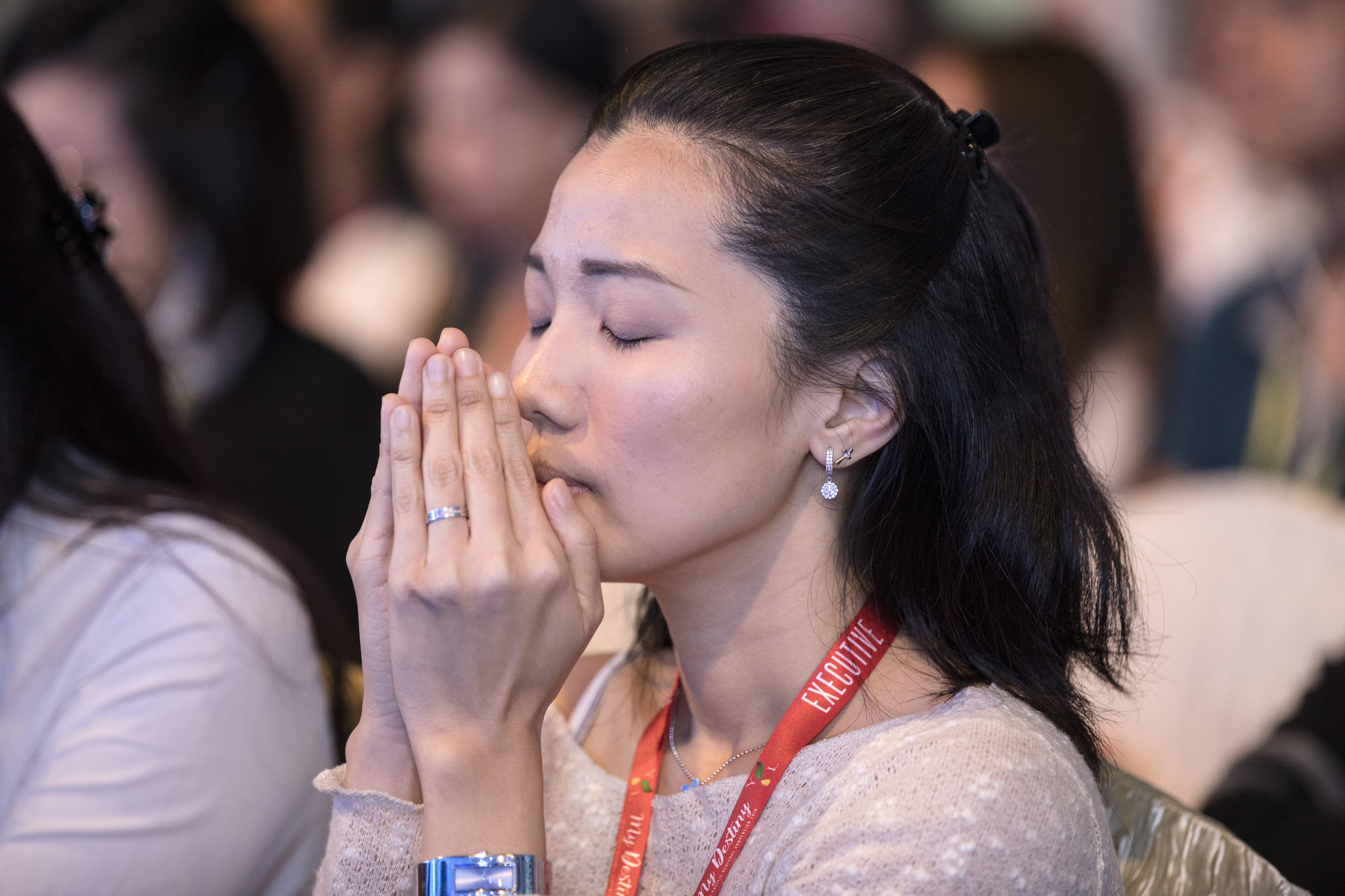
Once you become a seasoned oiler, there will be many things that are second nature to you. But when you are first starting out, there’s a learning curve involved. Let me help take the guess work out of using essential oils, with these handy tips and answers to your most likely FAQ’s, such as:
Here’s a guideline to the number of drops in a bottle. The thicker oils tend to come out as larger drops, so you will have fewer drops per bottle, even though the size of the bottle is the same.
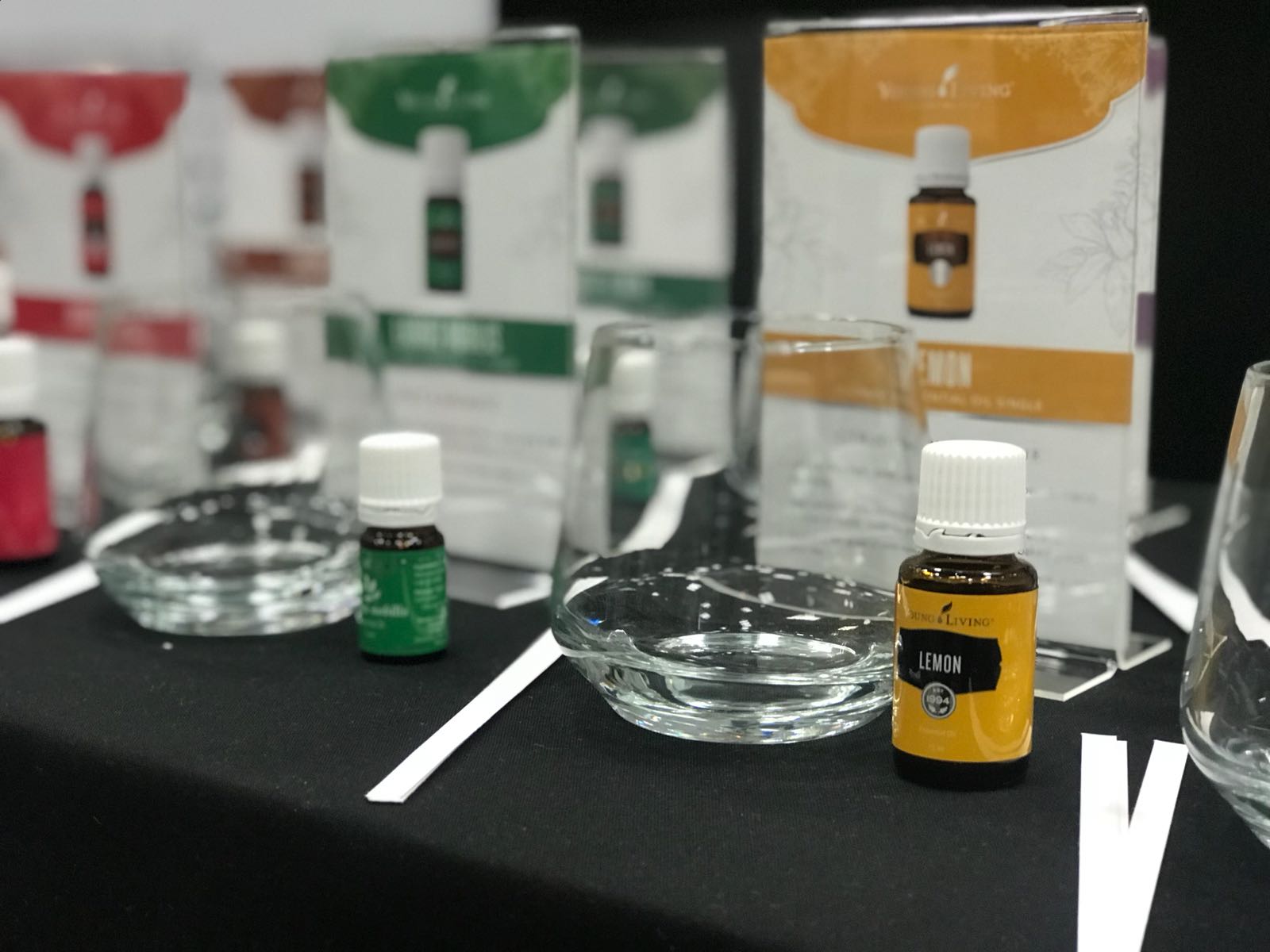
This is a great thing to know, because it helps you to work out how long a bottle will last you, depending on how you are using it. Naturally, using an oil in your cold air diffuser at 20 drops a day will take you through your oils more quickly than if you are using a single drop each day as a perfume.
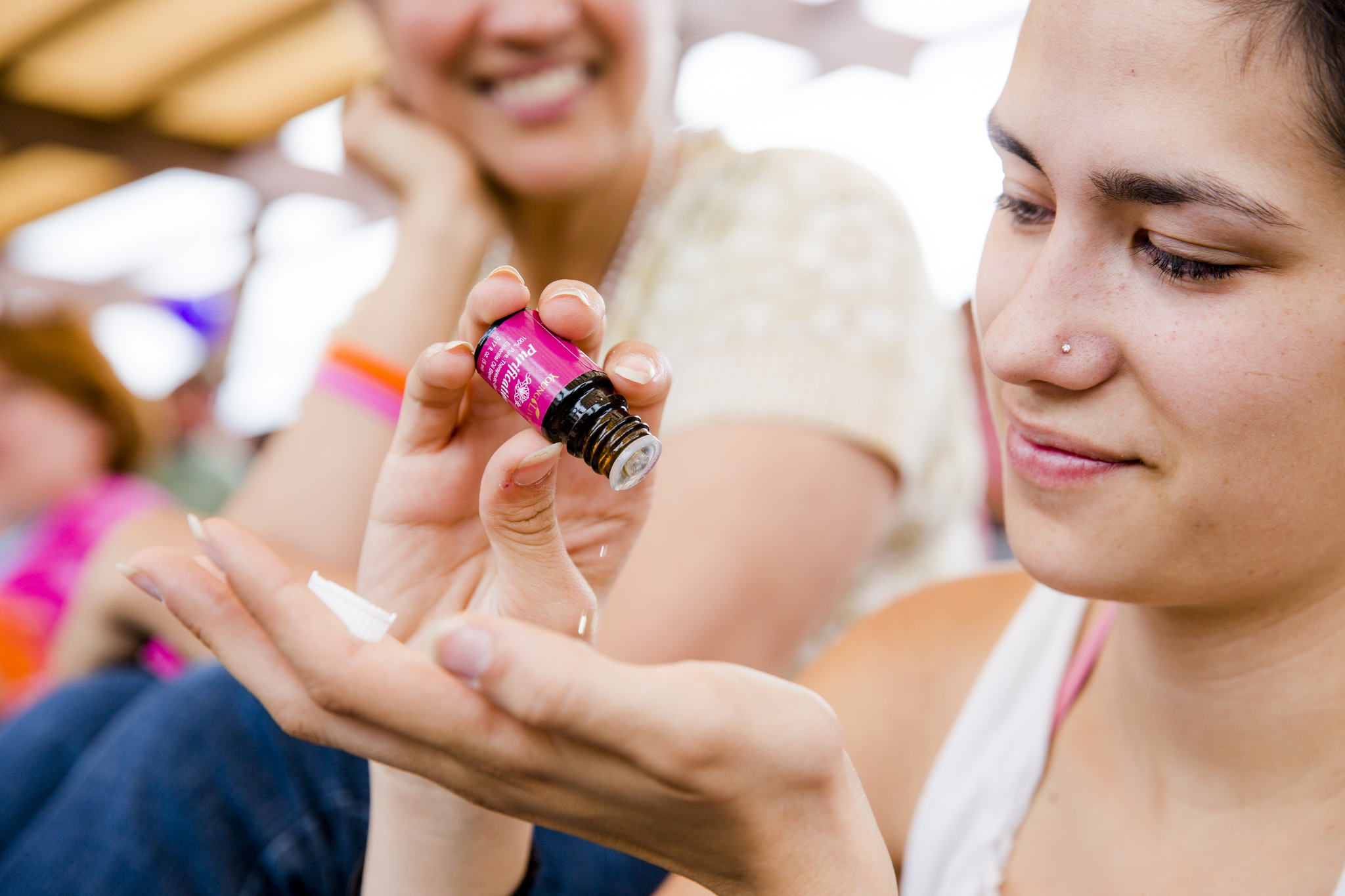 Many people touch the essential oil bottle to their skin in order to take some essential oil onto their wrist….yet by doing so, skin particles and dirt are transferred to the top of the bottle.
Many people touch the essential oil bottle to their skin in order to take some essential oil onto their wrist….yet by doing so, skin particles and dirt are transferred to the top of the bottle.
The advantage is that you receive a full drop, not just a “smear” of essential oil. I personally don’t shake the bottle to get the oil out (unless I’m in a hurry) – this whole process of allowing the drop to fall onto my skin is like a mini meditation in its own right.
And by holding the bottle at a height and allowing the drop to fall, it also means the oil gets a chance to interact with your aura (your energy field) before it even reaches your physical body!
An Extra Special Twist: Use your fingers to rotate the oil 3 times clockwise on the skin. The clock direction is as if you are outside looking in, so ask a friend to confirm that you are doing clockwise and not anticlockwise circles! Three is a sacred number in many traditions, and clockwise is the direction that DNA spins in a healthy human body…so the clockwise motion affirms health in the entire body, and the three times movement affirms our connection with something greater than ourselves (God, Universal Spirit, Love, Nature).
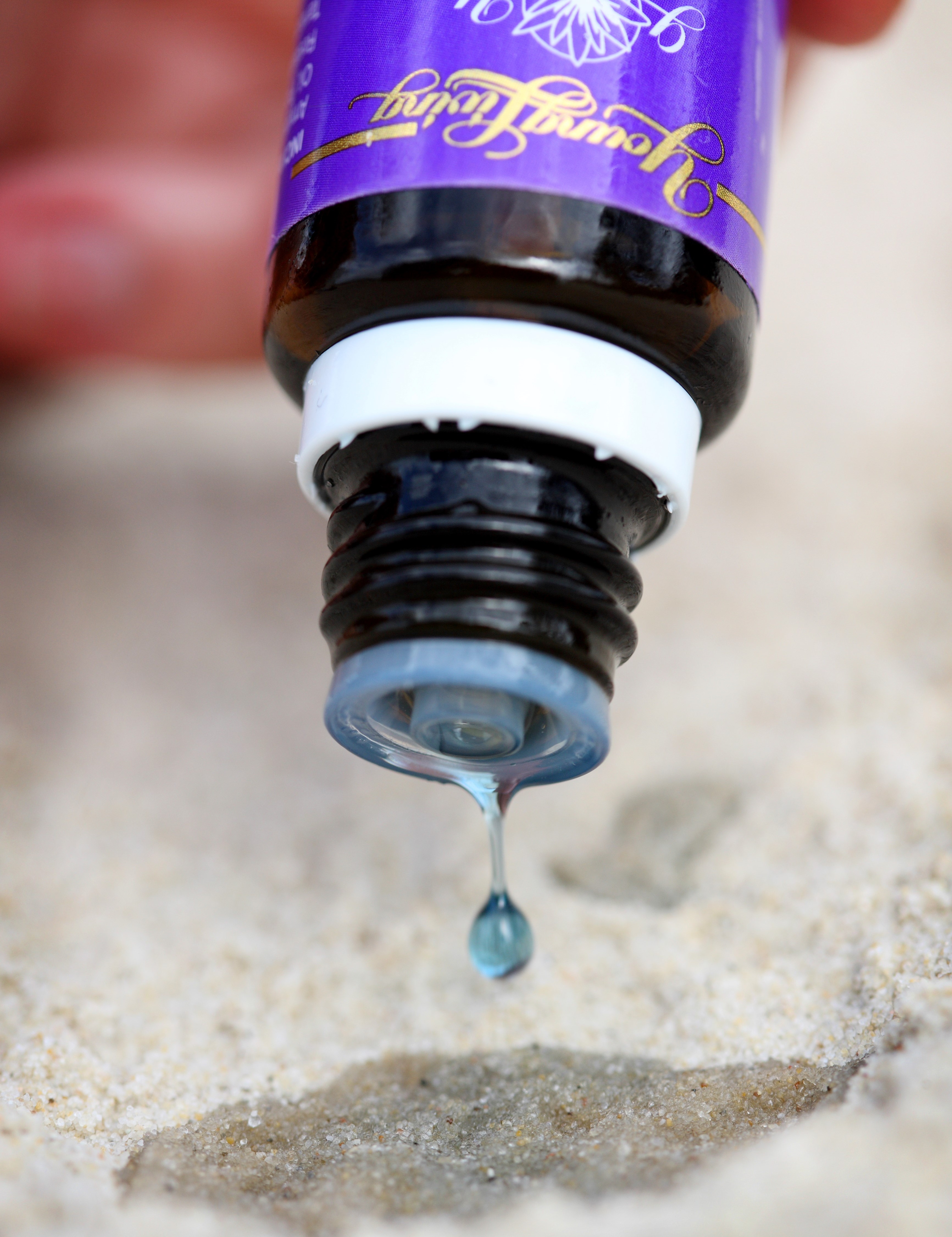 OK, it does take a little bit of practice, especially with the thicker, more resinous oils. At the end of the bottle neck is a plastic dripolator which has a small air hole in it. If you have the air hole pointing downwards, sometimes the oil won’t come out easily due to the vacuum effect, so twist your bottle and see if that makes a difference.
OK, it does take a little bit of practice, especially with the thicker, more resinous oils. At the end of the bottle neck is a plastic dripolator which has a small air hole in it. If you have the air hole pointing downwards, sometimes the oil won’t come out easily due to the vacuum effect, so twist your bottle and see if that makes a difference.
If the drop still won’t come out, check to see if your bottle is almost empty. If so, take out the plastic dripolator and very carefully tilt the bottle to get the last drops out.
There are also some essential oils (like Vetiver) that are so thick, they won’t easily pass through the dripolator. If it’s not coming out, remove the dripolator and very carefully pour some onto your finger.
 It takes 10,000 roses to make one 5ml bottle of Young Living Rose oil!!!
It takes 10,000 roses to make one 5ml bottle of Young Living Rose oil!!!That’s a whole field of roses, and it explains why Rose oil is the most expensive essential oil in the Young Living range. Pure, unadulterated Rose oil (from Rosa damascena) is not easy to find, as most Rose oil on the market is heavily diluted – usually no more than 5% rose oil in a base of vegetable oil or even alcohol.
But that’s not all. Young Living’s Rose oil goes one huge step further, because no chemicals or sprays are used in the production of any of the Young Living oils, including in the soil. They are truly “beyond organic” in quality, which is why I have such confidence using them.
Fascinating Fact: If you live in a cooler climate, you will have seen how coconut oil goes solid at cooler temperatures? Rose oil does the same thing! When you are using Rose oil in cooler weather, pop it against your skin or in a pocket for 5 minutes to warm it to room temperature before you use it. That will change it from a solid to a liquid state.
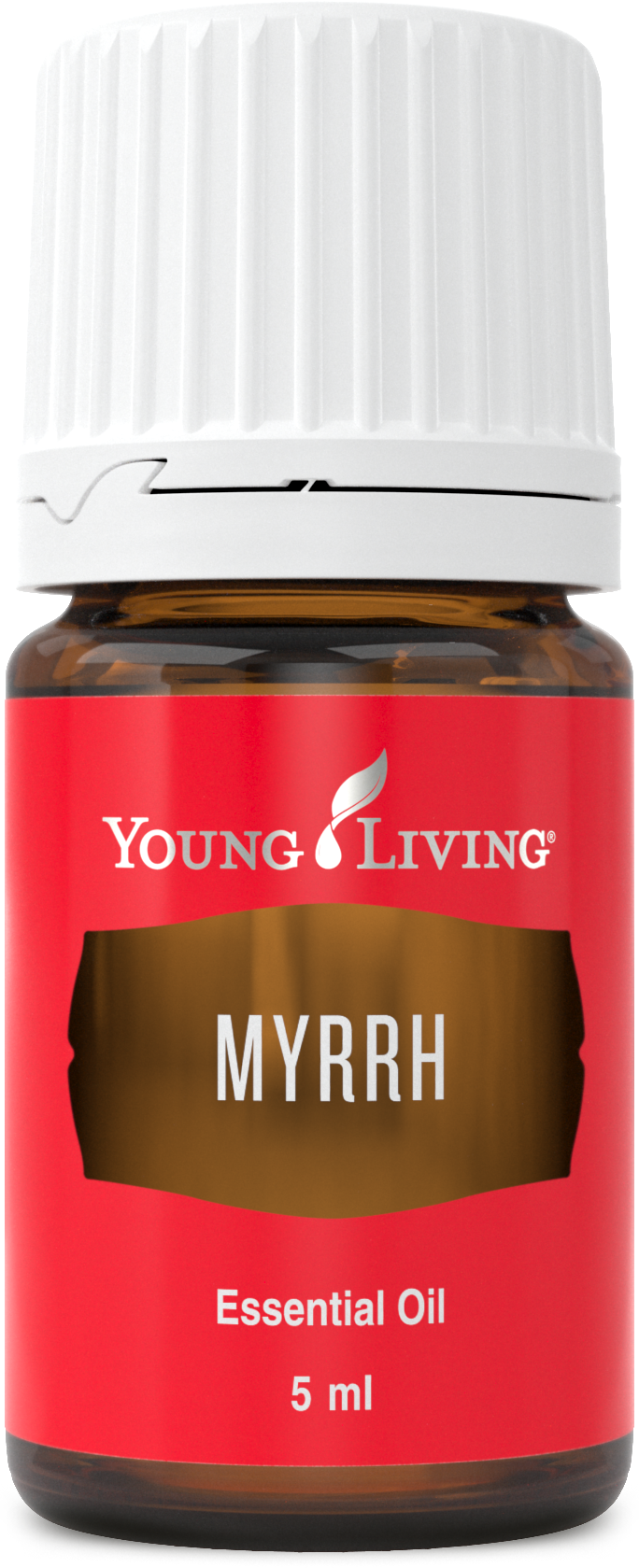 I often hear this comment in relation to Myrrh oil, although it can apply to other resinous oils as well….so let’s put the spotlight on Myrrh oil for a moment.
I often hear this comment in relation to Myrrh oil, although it can apply to other resinous oils as well….so let’s put the spotlight on Myrrh oil for a moment.
This amazing oil was one of the gifts given to baby Jesus by the 3 Wise Men. Amidst many other benefits, Myrrh oil is highly prized for its use in skincare. It helps the skin retain its youthful elasticity, and that’s why it’s often used on the face as part of a beauty regime.
For 8 weeks before baby is due, mix 1 drop of Myrrh oil with 4 drops of carrier oil (such as coconut, olive or V6 oil) and massage this into the perineum once a day.
Handy Tip: Have you noticed that over time, it becomes more difficult to remove the lid from your Myrrh oil? Myrrh oil is very resinous, and that resin builds up around the lid, making it difficult (or almost impossible) to open. Rub some vegetable oil like coconut oil, olive oil or V6 oil around the inside of the lid whenever you notice your Myrrh lid starting to stick, and it will enable you to open and close it with ease. The effect will last for quite a few weeks or months before it needs to be reapplied.
Essential oils need to be kept away from heat and direct sunlight, as these can destroy some of the active constituents in the essential oil and reduce the quality. I recommend keeping your oil below 40 degrees Celsius (104 degrees Fahrenheit). This applies to both single oils and to blends, regardless of their method of extraction.
This is also why we don’t recommend the old fashioned candle or electric oil burners, as the heat in these destroy the goodness of your oils. Instead, invest in a cold air diffuser.
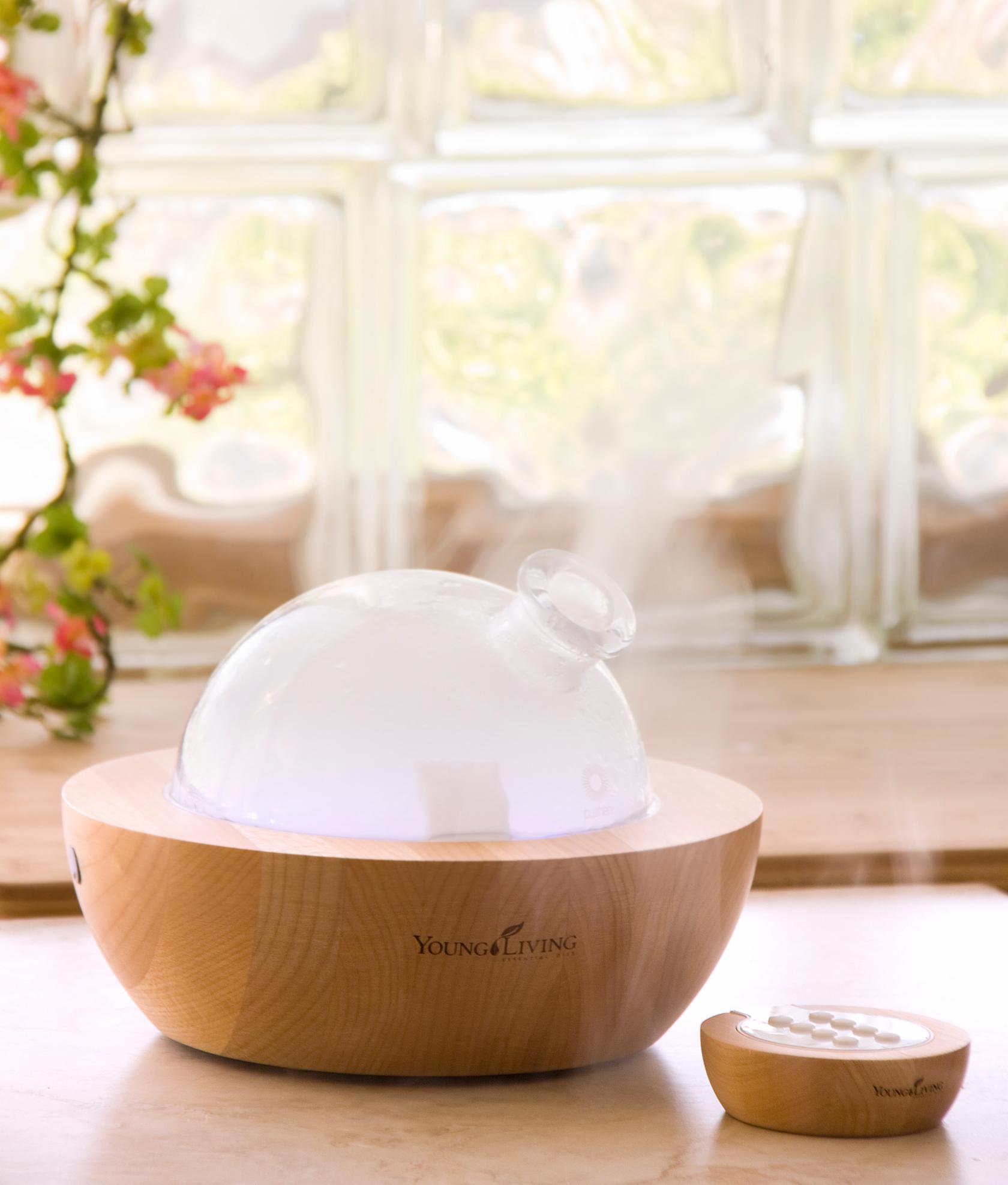
Many of these are based on ultrasonic technology, so a special plate vibrates at ultrasonic speed. This changes the water tension, turning the liquid into vapour. You simply add water to the container, add your favourite essential oils (usually 5 to 15 drops, or 25 if it’s a large open space and you want a stronger aroma), and press the start button.
Ultrasonic diffusers are virtually silent, come in all shapes and sizes, and make a great centerpiece for the home….plus they ensure your whole family (including your feathered and furry family) are benefiting from the aroma of essential oils.
It happens to the best of us – I’ve had times when I was dispensing oils from one bottle to another and had the dripolator out, and knocked over a bottle. There are several things you can do to help salvage some of the oil you’ve spilt:

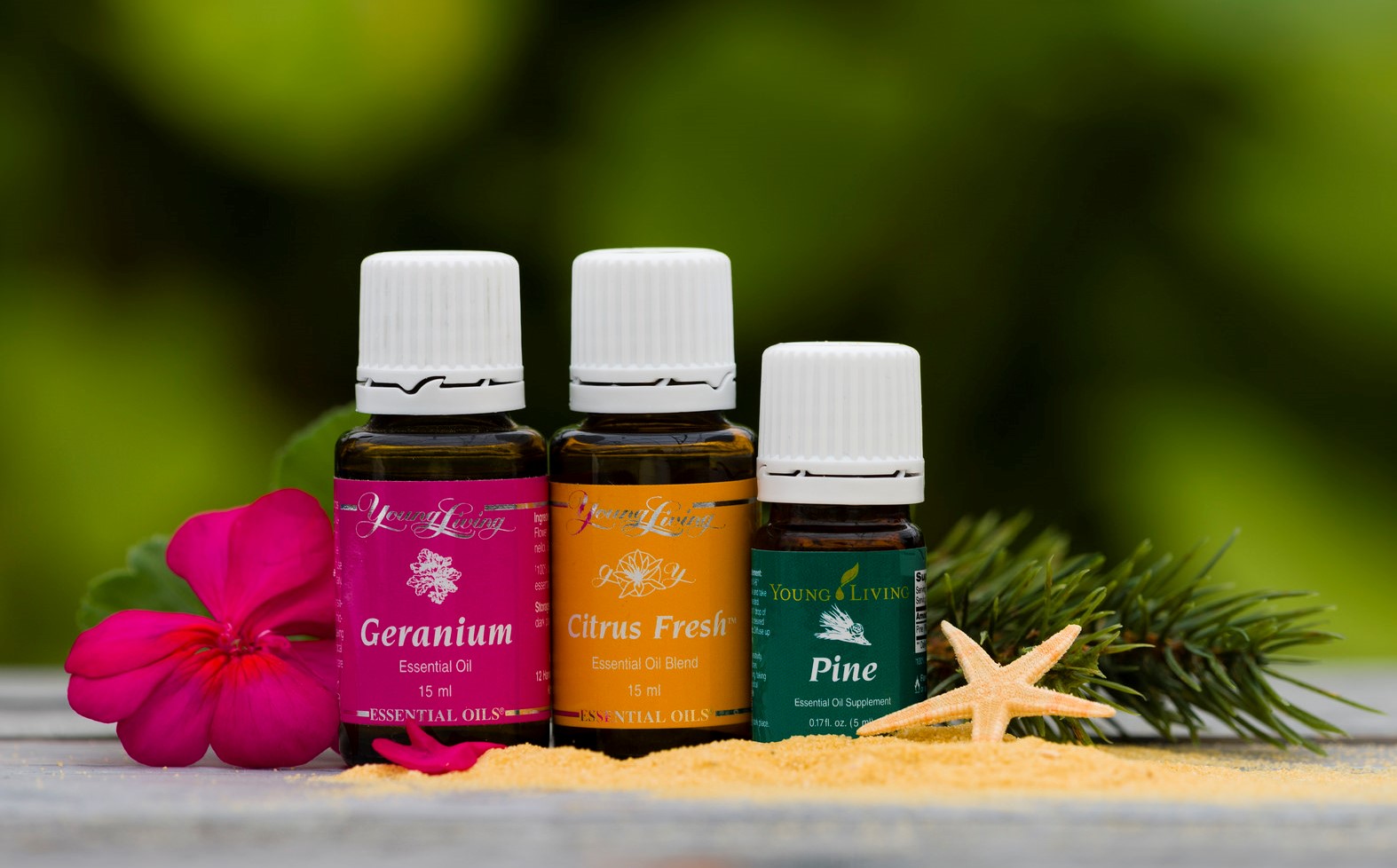 I’ve flown all over the world with my essential oils, and it’s typical that I would take about 60 different oils with me on international flights, because there are so many that I love to use.
I’ve flown all over the world with my essential oils, and it’s typical that I would take about 60 different oils with me on international flights, because there are so many that I love to use.
In Australia where we don’t have liquid restrictions on domestic flights, I’ve taken my whole case with 130 oils in it through as hand luggage, and put it through the x-ray machine.
 Gary Young has been asked this question many times. I remember about 10 years ago that he told us he’d looked into this using a machine that reads frequency. I think it was a bioelectric frequency monitor developed by Bruce Tainio, and based on radionics – at least, this is what Gary has used in the early days to measure essential oil frequency.
Gary Young has been asked this question many times. I remember about 10 years ago that he told us he’d looked into this using a machine that reads frequency. I think it was a bioelectric frequency monitor developed by Bruce Tainio, and based on radionics – at least, this is what Gary has used in the early days to measure essential oil frequency.
He discovered that the frequency went down for a couple of hours after the essential oils went through the x-ray, but then it came right back up again.
 Well, that all depends on the outside temperature – remember, to protect the properties of the oil, it should be kept away from heat and sunlight.
Well, that all depends on the outside temperature – remember, to protect the properties of the oil, it should be kept away from heat and sunlight.
If you have one of the oil cases with a foam insert in it, the foam helps insulate the oils from the heat for a period of time. But it’s still better to take them with you when you leave the car, rather than having them sit in the heat.
 Providing it doesn’t have any carrier oil in it, and providing you’ve kept the oil away from heat and light, your Young Living essential oil should last you about 5,000 years!
Providing it doesn’t have any carrier oil in it, and providing you’ve kept the oil away from heat and light, your Young Living essential oil should last you about 5,000 years!When King Tutankhamun’s tomb was opened, they found alabaster jars with essential oils in them. When the lids were removed, the oils were still in perfect condition, apart from a bit of waxy build up around the lid.
I can’t say that this is true about other brands – because when synthetics are present, I’ve had brands that have smelt like chemicals after a year!
However, here’s something you may not know. Essential oil can evaporate through glass, albeit very, very slowly….so in practical terms, you probably won’t have any left in 5,000 years’ time if it’s been kept in its original glass container. And let’s be honest – you really want to be using your essential oils every day, so hopefully you’d never have an oil that sits on the shelf for this many years.
Now let’s talk about what happens if it’s blended with a carrier oil, which applies to some of Young Living’s blends.
In my experience this can take 5 to 10 years to happen. Your nose will know….and if it’s gone rancid, there’s nothing to do but buy a fresh bottle.
Young Living is moving over to coconut oil as a carrier oil, as this is a very stable carrier oil, and it’s one that is tolerated on the skin by most people (given that we are now in a world where so many people have nut oil allergies).
The short answer is “Yes, of course!” But essential oil and water don’t mix. Most essential oils are lighter than water, so they float on top. Then you sit down in the hot bath, and end up with concentrated essential oil on your tender body parts! That’s why essential oils that are not normally considered warming can still create some irritation on the skin during or after a bath.
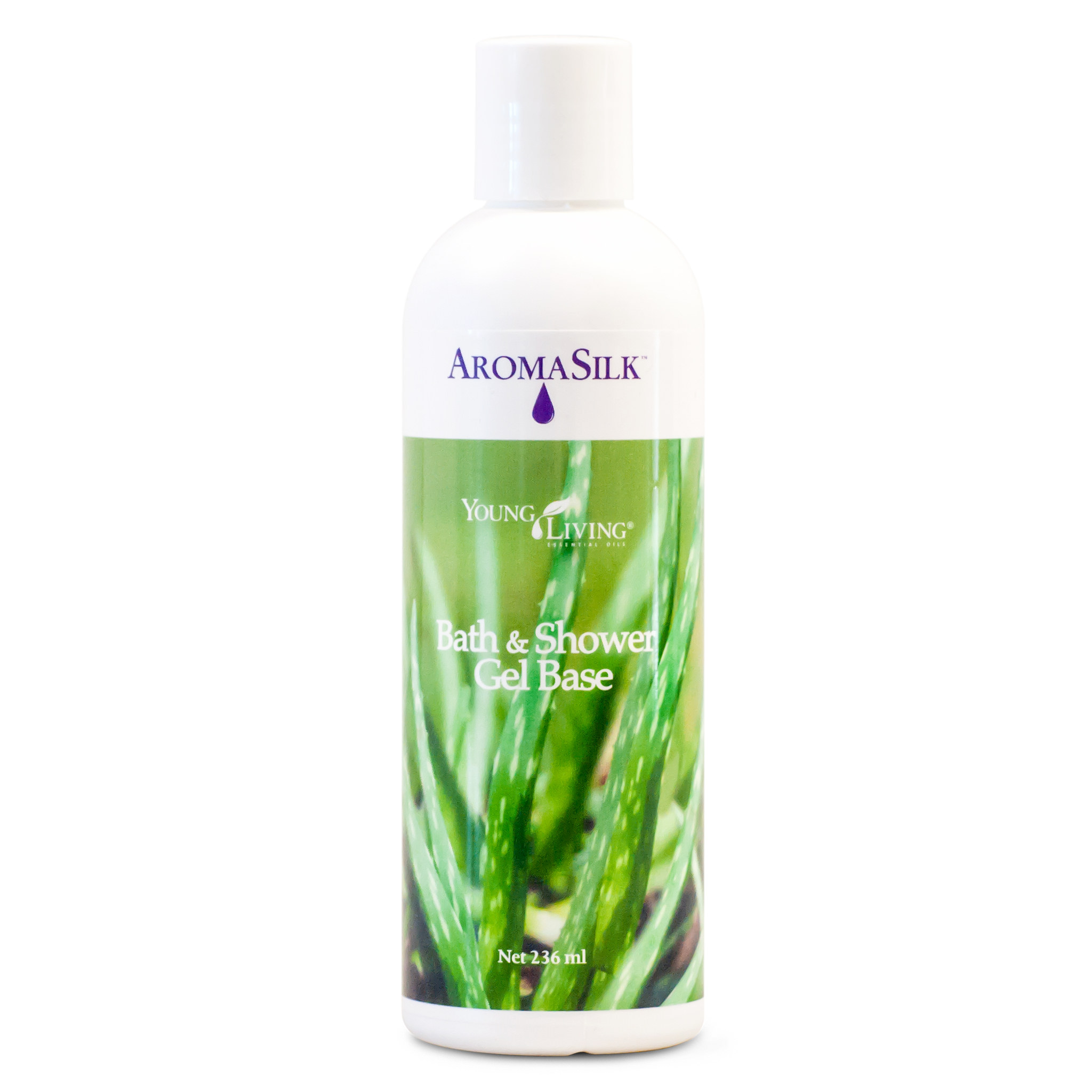 Instead, use some of Young Living’s Bath Gel Base in the bath – it will help disperse your essential oils.
Instead, use some of Young Living’s Bath Gel Base in the bath – it will help disperse your essential oils.Alternatively, you can mix your oils into some milk, vegetable oil or even a teaspoon of Witch Hazel to disperse them before adding them to the bath, or mix them into some bath salts (like Himalayan, Epsom and/or Baking Soda).
The only time I’ve ever had an issue using essential oils in my bathtub was with Canadian Red Cedar oil, which is no longer sold by Young Living. To my surprise, it is one of the few oils that is heavier than water, and it has a deep red colouring. So it sank to the bottom of my acrylic bathtub and caused some permanent staining.
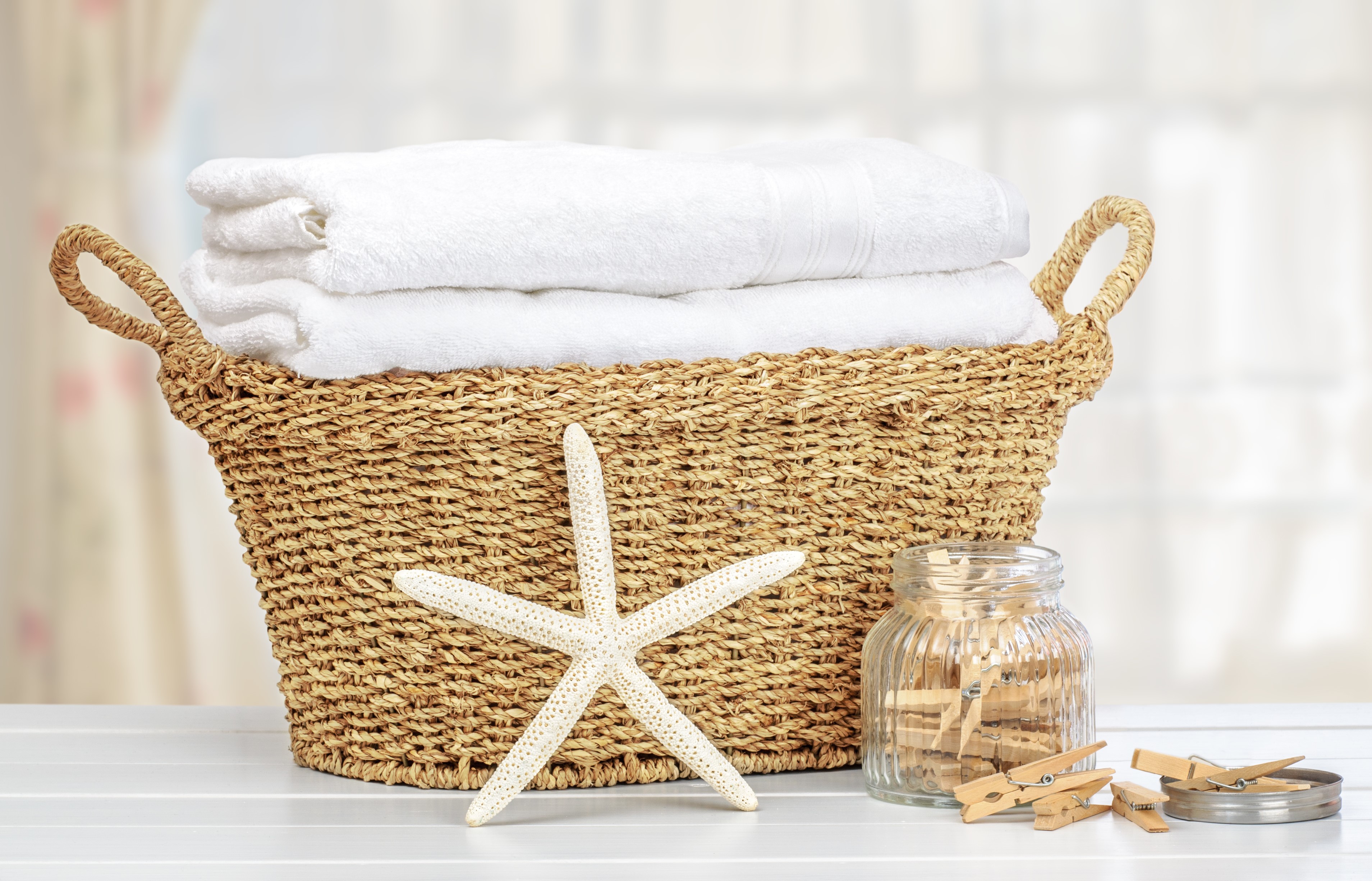
Yes, absolutely – but don’t get it onto clothes that are synthetic, eg. stretchy T-shirts, or it will digest some of the synthetic material in the fabric and leave pock-marks. Instead, put it on a towel or laundry bag and add to the wash.
Essential oils are so environmentally attuned that many of them can digest plastics and synthetics, which is the same reason your toilet seat may slowly deteriorate if you have been rubbing essential oils on your body and then sitting on the toilet.
 This is a really interesting one! I’ve noticed that people whose bodies are more acidic tend to be more sensitive to the aroma of essential oils. This includes people whose health is compromised, eg. those in hospitals. When my aunt had cancer, I used to give her relaxing daily foot rubs. I always had to dilute the oils, because she couldn’t tolerate the intensity of their smell. That’s also the reason I chose to massage her feet, and not her shoulders or hands (ie. her feet were the furthest body part from her nose!)
This is a really interesting one! I’ve noticed that people whose bodies are more acidic tend to be more sensitive to the aroma of essential oils. This includes people whose health is compromised, eg. those in hospitals. When my aunt had cancer, I used to give her relaxing daily foot rubs. I always had to dilute the oils, because she couldn’t tolerate the intensity of their smell. That’s also the reason I chose to massage her feet, and not her shoulders or hands (ie. her feet were the furthest body part from her nose!)
The good news is that essential oils are always so balancing, and they have a beautiful way of infusing into our life. So start with less, diluted if needed, or just a couple of drops in the diffuser. Or even just wash your clothes with essential oils, and use Young Living’s beautiful soaps and shower gels. This allows your loved ones to acclimatise to the new aromas, and over time you’ll be able to slowly increase your use of the oils.